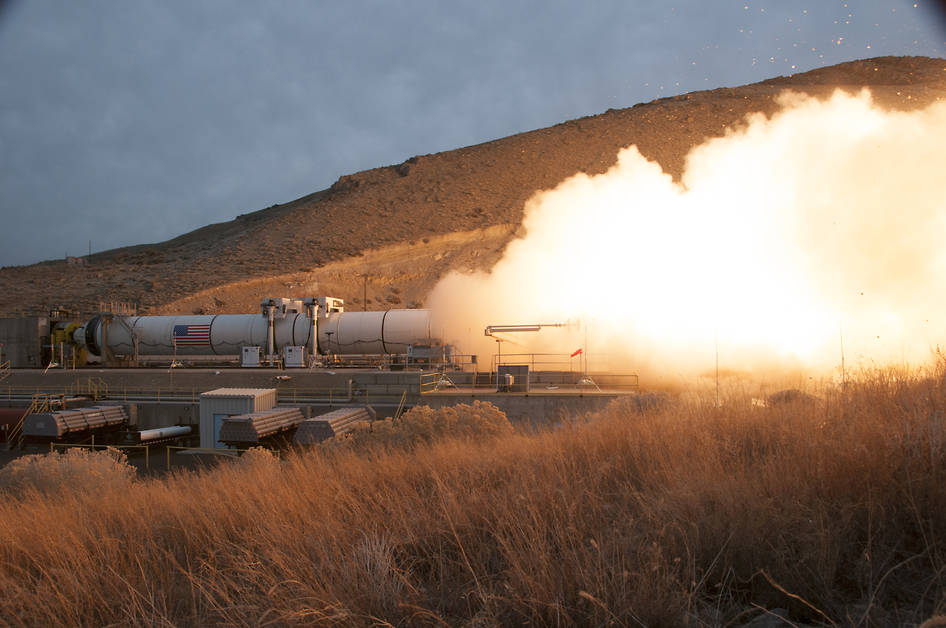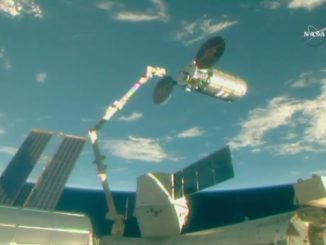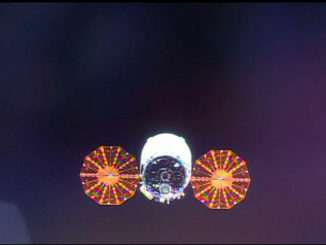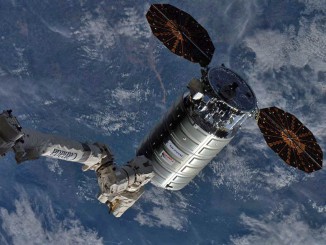
A solid-fueled rocket booster fired for more than two minutes in Utah on Wednesday, spewing a torrent of glowing hot flame against a hillside in a key test for the Space Launch System, a behemoth rocket NASA is developing to send astronauts on long-distance voyages into space.
Restrained in a test housing, the 177-foot-long rocket motor ignited at 11:30 a.m. EDT (1530 GMT) with a blast of fiery exhaust that sent a towering column of smoke and dust hundreds of feet into the sky.
Made by Orbital ATK, a company recently formed by the merger of Orbital Sciences and ATK, the rocket motor produced 3.6 million pounds of thrust and consumed 5.5 tons of powdered aluminum fuel, oxidizer and binding agents per second.
The firing was the first of two tests to qualify the the booster to fly on the Space Launch System, which is scheduled for its first test flight without astronauts in 2018. A crewed mission will blast off in 2021 and fly around the moon, and future missions are planned to dispatch astronauts to an asteroid and Mars.
A large fire extinguisher injected 31 tons of carbon dioxide into the booster’s nozzle after the rocket exhausted its pre-packed propellant supply, and the firing appeared to go according to plan.
“It looked really clean, we’re very excited,” said Charlie Precourt, Orbital ATK’s vice president and general manager for propulsion systems. “It’s a great result. You could feel the pressure coming off the motor, you could see the plume and watch the nozzle vectoring. It all looked great.”
Next will come an intensive data review to evaluate the rocket’s performance.
Engineers will examine data recored by more than 500 channels of instrumentation to check the booster’s performance against more than 100 test objectives.
“This test is a significant milestone for SLS and follows years of development,” said Todd May, NASA’s SLS program manager. “Our partnership with Orbital ATK and more than 500 suppliers across the country is keeping us on the path to building the most powerful rocket in the world.”
The Qualification Motor-1, or QM-1, test Wednesday will be followed by a similar firing in early 2016. The qualification tests build on a series of three developmental firings conducted by Orbital ATK to check changes to the booster’s design.
The booster’s propellant mixture was warmed to 90 degrees Fahrenheit for Wednesday’s test, and next year’s firing will burn fuel at colder temperatures to bracket the extremes of the rocket’s planned operating conditions.
Two 12-foot-diameter solid rocket boosters will fly on each SLS mission, producing more than 75 percent of the rocket’s total thrust in the first two minutes of launch. Four hydrogen-fueled RS-25 engines — upgraded units that flew on space shuttle missions — will power the 27.6-foot-wide SLS core stage.
The five-segment SLS boosters are extended versions of the rocket motors that launched space shuttle missions.
“The biggest change is we added a segment, which is 25 percent more propellant for way more performance,” said Precourt, a former space shuttle commander. “The typical shuttle booster would give you about 3 million pounds (of thrust), and this is a little over 3.5 million pounds of thrust, so it’s the kind of performance to get our exploration journey to Mars off the ground.”
Designers also removed asbestos from the booster’s insulation to comply with environmental regulations, adjusted the attach fittings where the motor will connect to the SLS core stage, and removed the rocket’s parachutes used for recovery after space shuttle launches, according to May.
“We’ve got new avionics in it from what used to be on shuttle,” Precourt said. “They are far more capable than what we had in that program … We also changed what’s known as the insulator, the material that sits between the wall of the motor casing and the propellant. The propellant’s burning at about 5,000 degrees (Fahrenheit), and you have to have an insulator in there. It’s a special material from a rubber base that ablates and protects the system of the case from being compromised by the heat.”
Brian Duffy, a former astronaut and Orbital ATK’s vice president for exploration systems, said components for the boosters to fly on the first SLS mission will be prepared for launch beginning this year.
“This year is when the action starts for us,” Duffy said.
Structural parts left over from the space shuttle program — nose cones, aft and forward skirts and frustums — are in storage at the Kennedy Space Center. Duffy said Orbital ATK technicians will soon start working on the components.
“We already have them there, and we have them in a preserved state where once we get the go, which will be very soon, we’ll start taking them out of their preserved state, clean them up and get them ready for flight,” Duffy said.
Follow Stephen Clark on Twitter: @StephenClark1.



